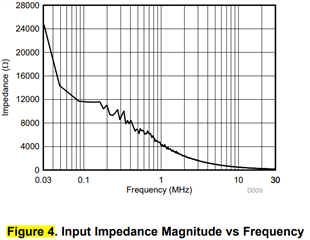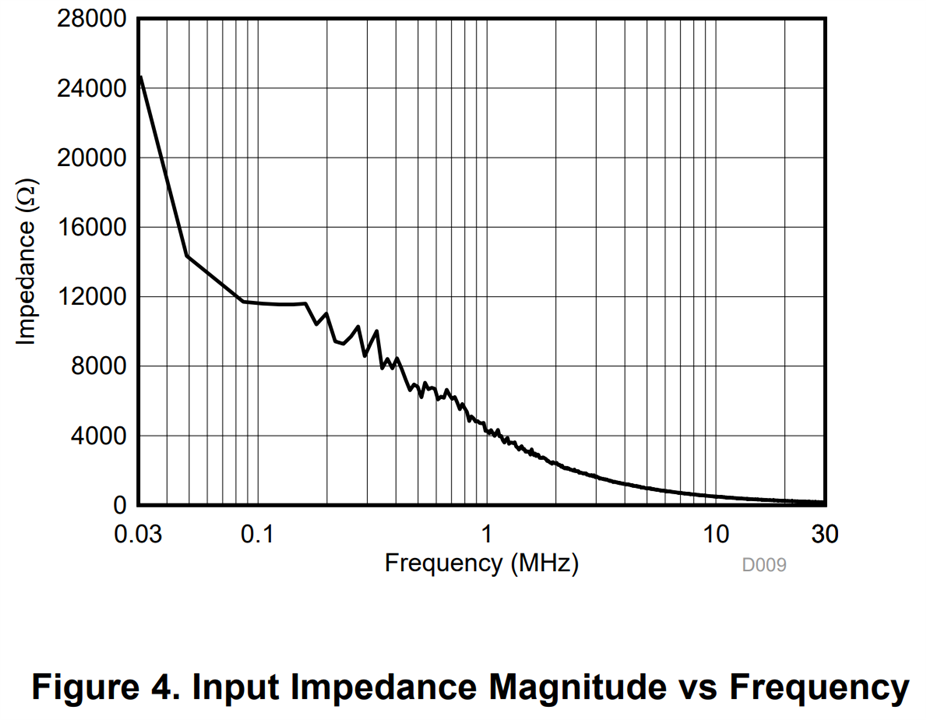Hi Team,
Can you please us help with this inquiry?
I am working with the AFE5832. I understand from the datasheet that when the attenuator is enabled, it essentially acts as a voltage divider and therefore an internal resistor is implemented.
When the attenuator is disabled, what is the input impedance of the AFE? The datasheet mentions that the input impedance is given by the input capacitance alone (35pF), but certainly there must also be a (very) high resistance to ground when the attenuator is 'open'? What would be a reasonable value for that resistance?
Also, why is the input impedance at low frequencies (<500kHz) not following the capacitive impedance model? (see attached figure). If this model were true, the impedance would be hyperbolic (1/Cw), but this model breaks down at around 700kHz

Regards,
Danilo


